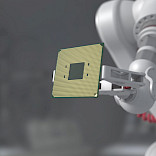The Innovator’s Dilemma was popularized by Clayton Christensen in 1997 with the publication of his book The Innovator’s Dilemma. In it, Mr. Christensen explains why established firms have difficulty adjusting to the arrival of disruptive new technology. To simplify this concept, I will use an example from the book.
Mechanical Shovels
Many years ago, excavators operated using a system of cables and pulleys that controlled the movement of the excavator. For the time, these excavators were efficient and served a multitude of customers such as excavation, construction, and mining companies.
In 1947, a new technology was born: hydraulic excavators. Initially, these excavators were small and mounted on farm tractors. Their power was very limited and only allowed to excavate a very small amount of earth.
Given their low capacity, customers using cable shovels had little interest in hydraulic shovels. Therefore, cable shovel manufacturers had little or no interest in developing this new technology. Over the years hydraulic shovel technology improved and ultimately hydraulics surpassed cable shovel technology.
Unfortunately, only four of the thirty cable shovel manufacturers succeeded in reinventing themselves as hydraulic shovel manufacturers. Why such a high failure rate? One reason is that leaders had to choose between:
- Meet the current needs of their customer and seek to gain market share
or - Innovate and invest in a still embryonic technology in an underdeveloped market.
As Mr. Christensen put it, “They failed because the hydraulics didn’t make sense – until it was too late.” This is the innovator’s dilemma.
Eastman Kodak
You probably remember the Eastman Kodak company that once dominated the photography market. The company provided films that perfectly met the needs of its customers. The arrival of new digital photo technology did not seem a threat since it was more expensive and of poor quality.
Kodak, however, was caught in a dilemma; invest in a disruptive technology that did not meet the needs of its customers or continue to bet on the sale of highly profitable films. The emphasis on digital risked cannibalizing film revenue.
Over the years, digital technology improved, and Eastman Kodak failed to innovate and adapt in time. It failed because the digital photo didn’t make sense – until it was too late.
The case of Google and ChatGPT seems to me to be a good recent example of the innovator’s dilemma. For those unfamiliar with the tool, ChatGPT was introduced in 2022 by the OpenAI company and is an IT solution that can interpret and generate text to answer questions from its users. Although advanced, the technology offered by ChatGPT is still imperfect and several technological improvements are still needed. In my opinion, this technology illustrates the concept of a disruptive technology well.
Now back to Google. Why was it not the first to market a solution similar to that of ChatGPT? It had ample financial resources, competent employees, and had participated in the development of the basic technology behind ChatGPT.
The answer may lie in the current form of ChatGPT, which does not precisely meet the immediate needs of Google’s customers; they want to display advertising. More importantly, I believe that the emphasis on this new technology risked cannibalizing Google’s revenue. Like Kodak, it was therefore probably caught in a dilemma where it had to decide between developing and deploying a still embryonic technology that did not meet the immediate needs of its customers or continuing to rely on the sale of highly profitable advertising.
In my opinion, these examples demonstrate the dilemma that companies commonly face when introducing new technology. In closing, Google recently announced the launch of a solution like ChatGPT. We can speculate on the reasons that led Google not to deploy its solution first. Despite everything, its leaders had certainly faced the innovator’s dilemma.





